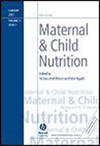Mapping Stakeholders in Mexico's Maternal and Child Health Network: A Net-Map Approach
Abstract
Maternal and child health care consists of providing quality care for the dyad mother-child, starting with prenatal care, early postpartum, and monitoring the growth and development of children during their first 1000 days of life. Maternal and child malnutrition remains a critical public health concern in Mexico, and it is still far from reaching the Global Nutrition Targets, particularly those corresponding to stunting, low birth weight, anemia, and exclusive breastfeeding by 2030. The objectives of this study were to: (1) identify the actors involved in decision-making regarding programs or policies for maternal and child malnutrition prevention and care in Mexico; (2) Identify the themes and institutions in which the actors are involved; and (3) Analyze the information by emphasizing the roles of the relevant actors, their influence, and power in working toward the improvement of maternal and child health and nutrition. We used the actor mapping or Net-Map methodology developed by the International Food Policy Research Institute and the World Bank. The Mapping was conducted through individual interviews with key informants related to or involved with maternal and child health and nutrition topics in Mexico (n = 19 in the first stage; n = 15 in the second stage). Several actors are involved in maternal and child health and nutrition in Mexico. However, the decision-making power remains at the government or supranational organizations level, with little intervention from organized civil society. Working networks must be strengthened at all levels to further enhance the actions that are being or may be implemented.


 求助内容:
求助内容: 应助结果提醒方式:
应助结果提醒方式:


